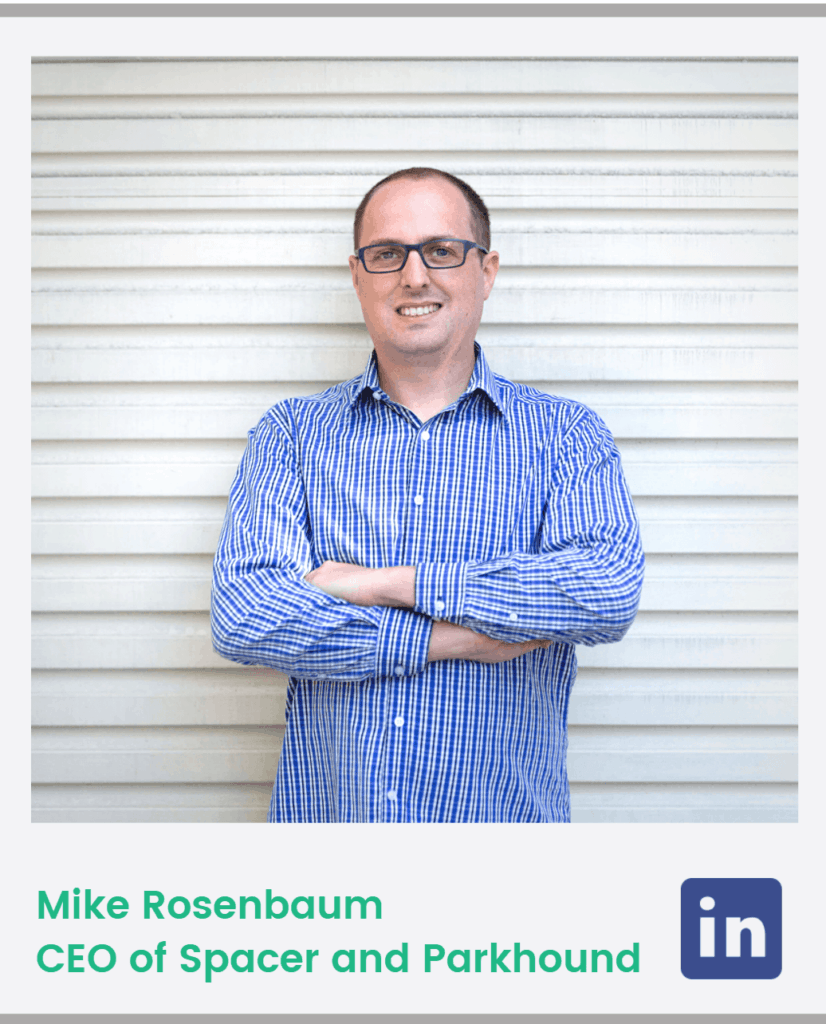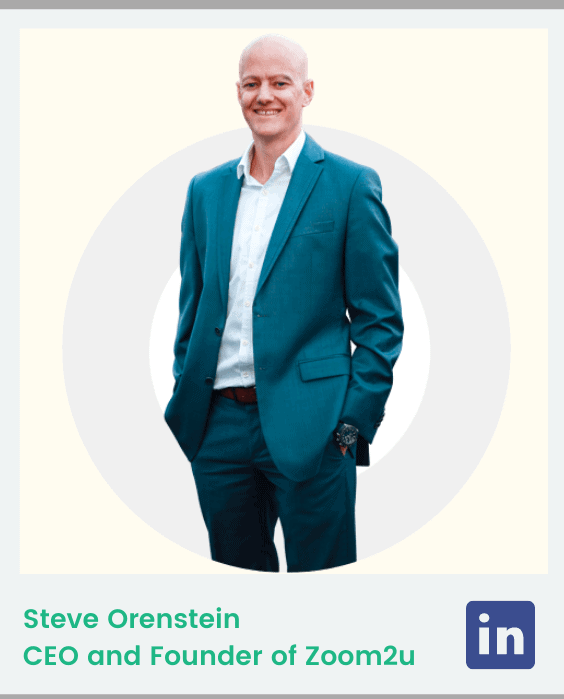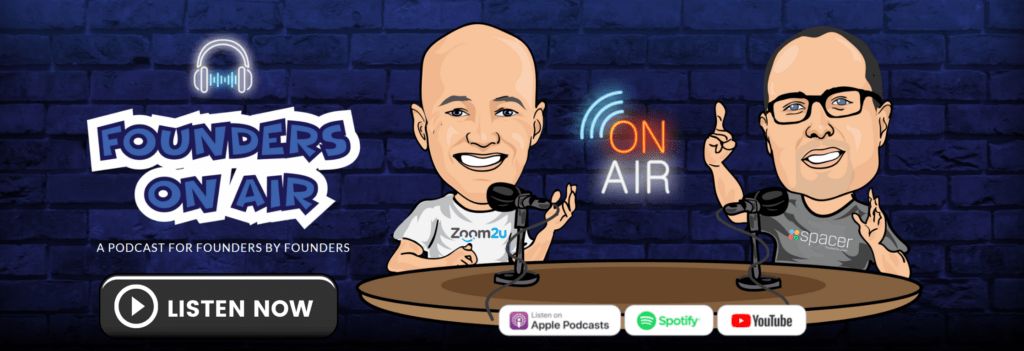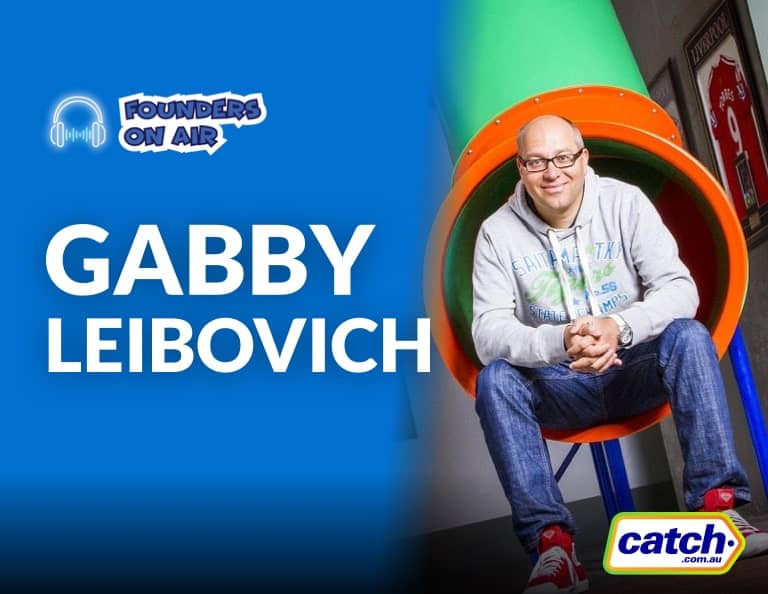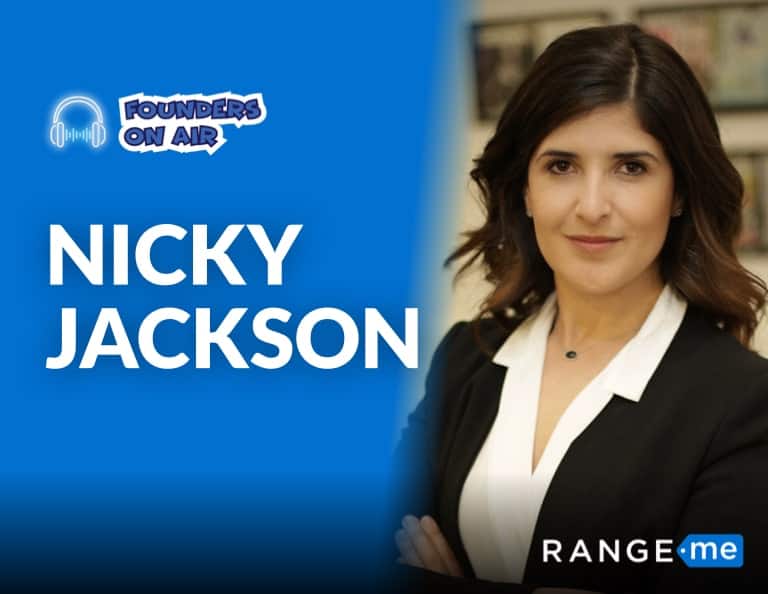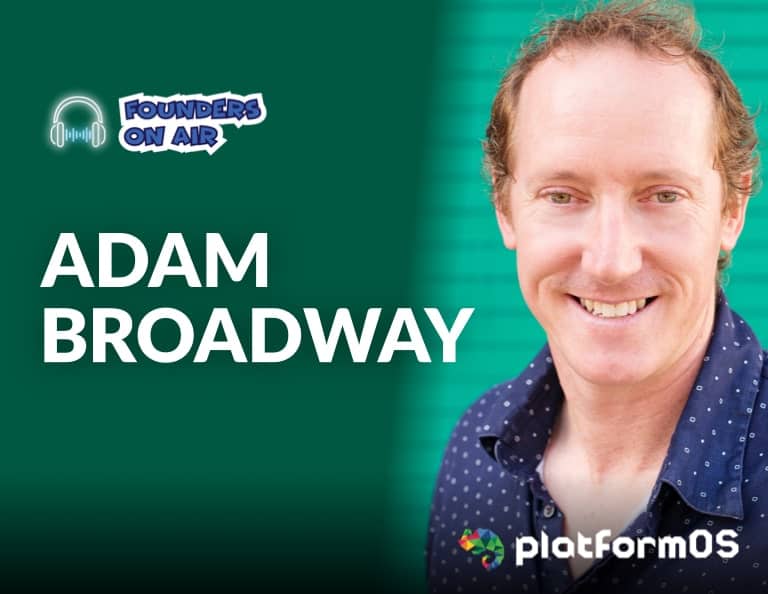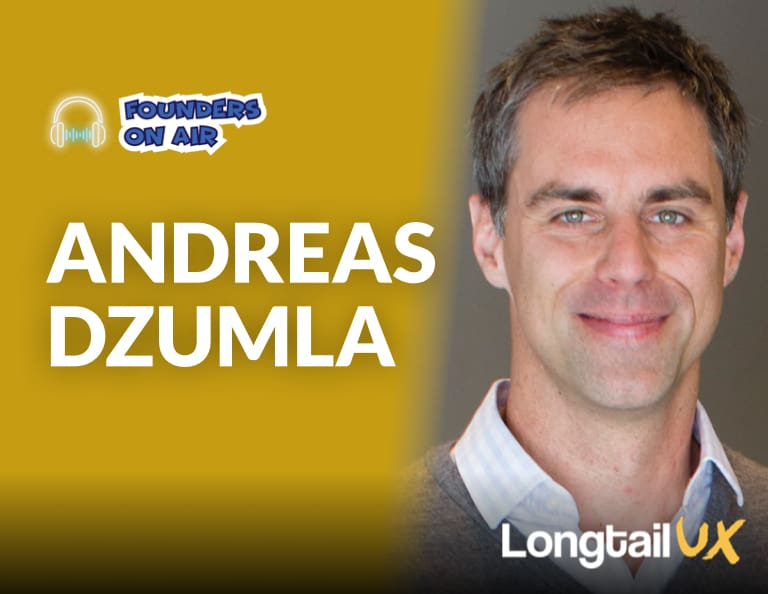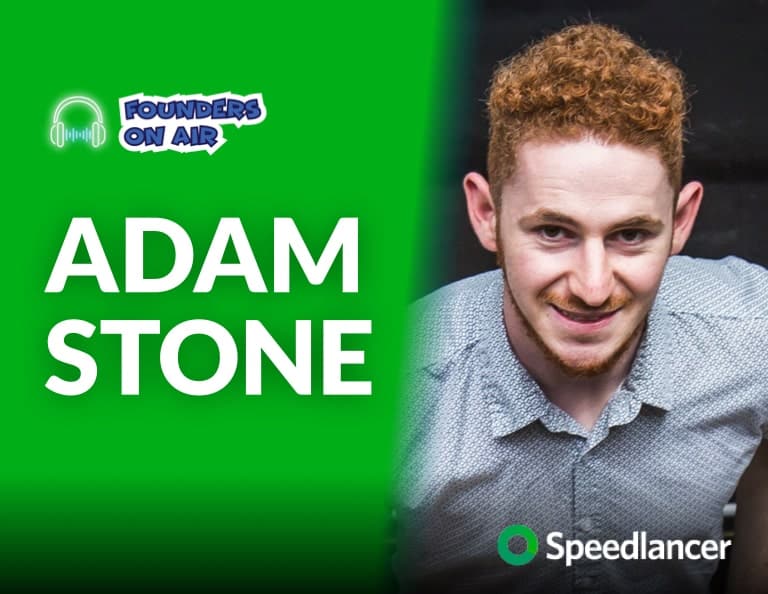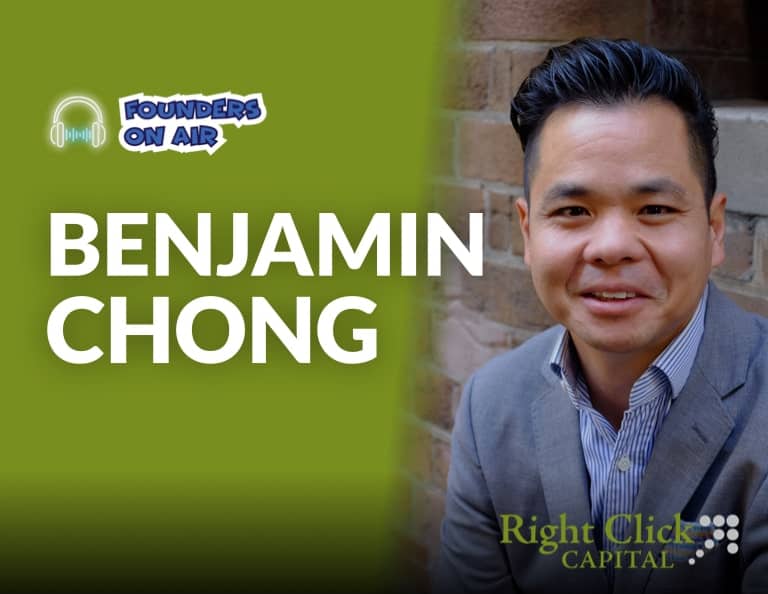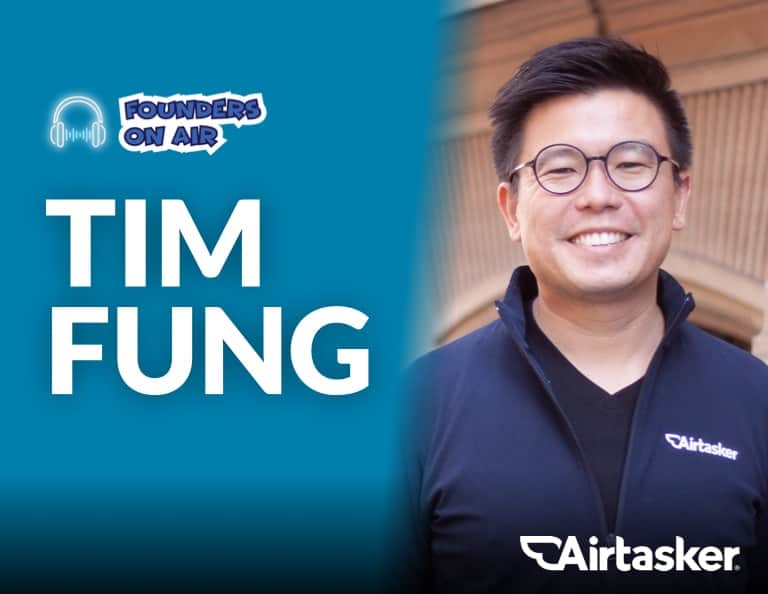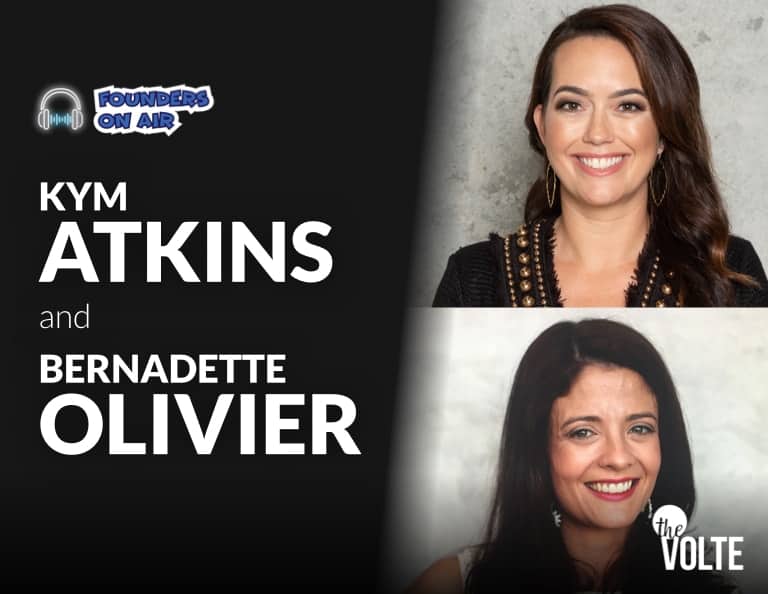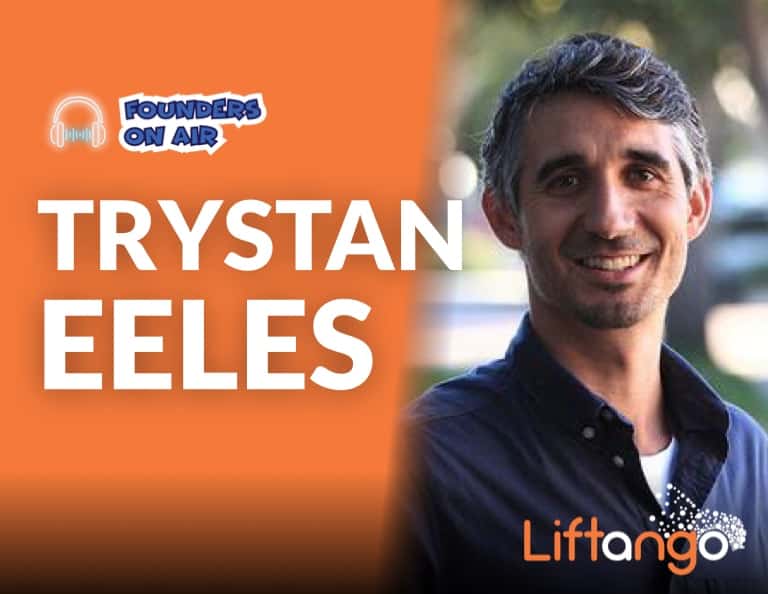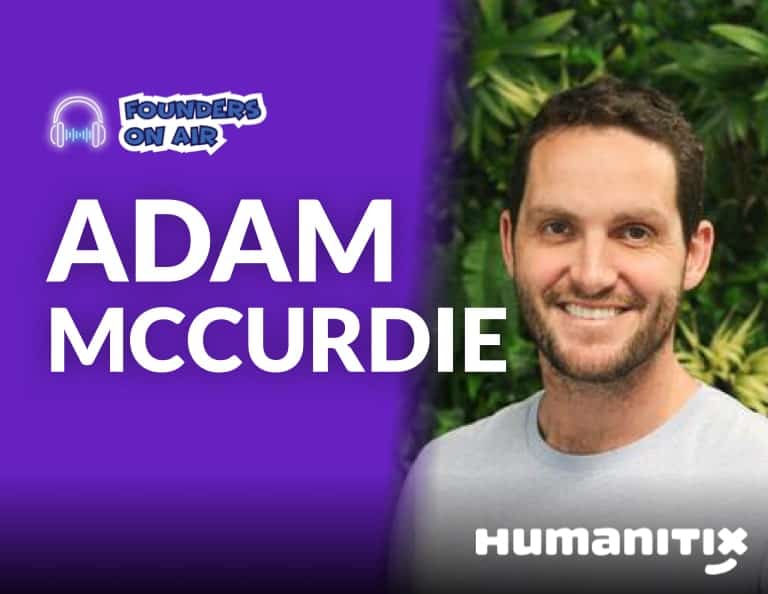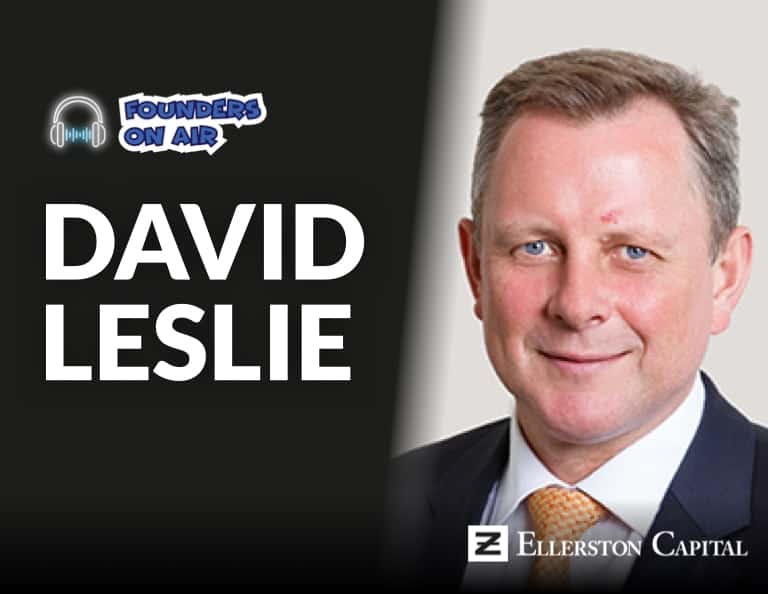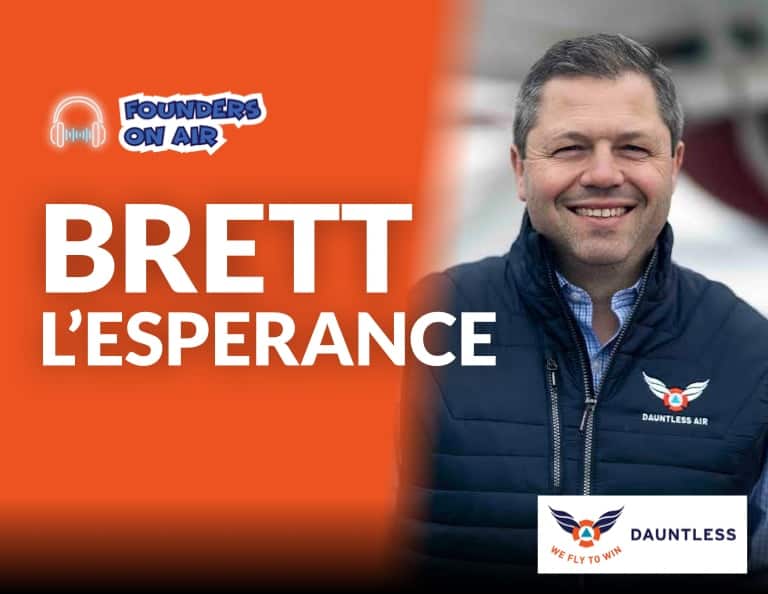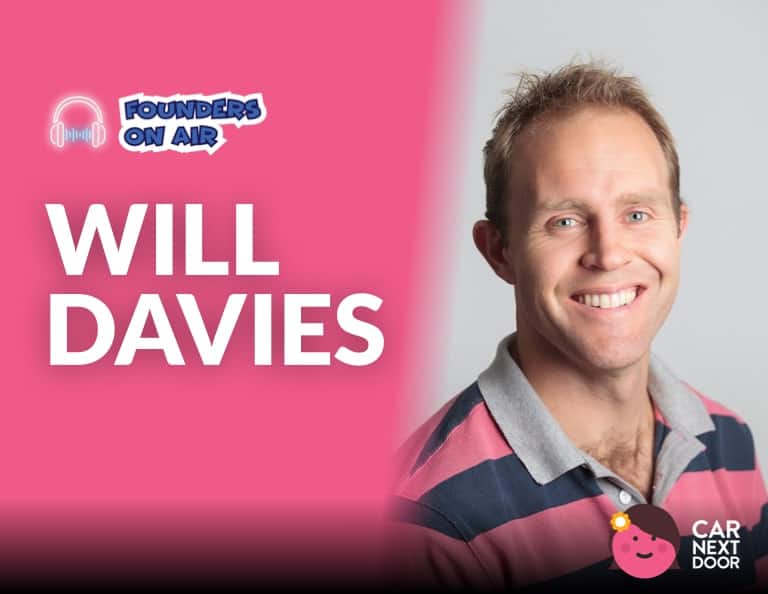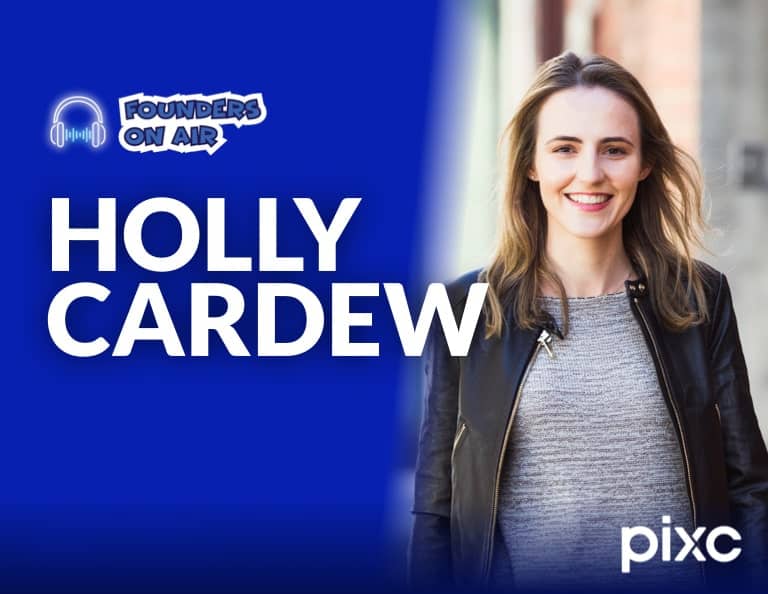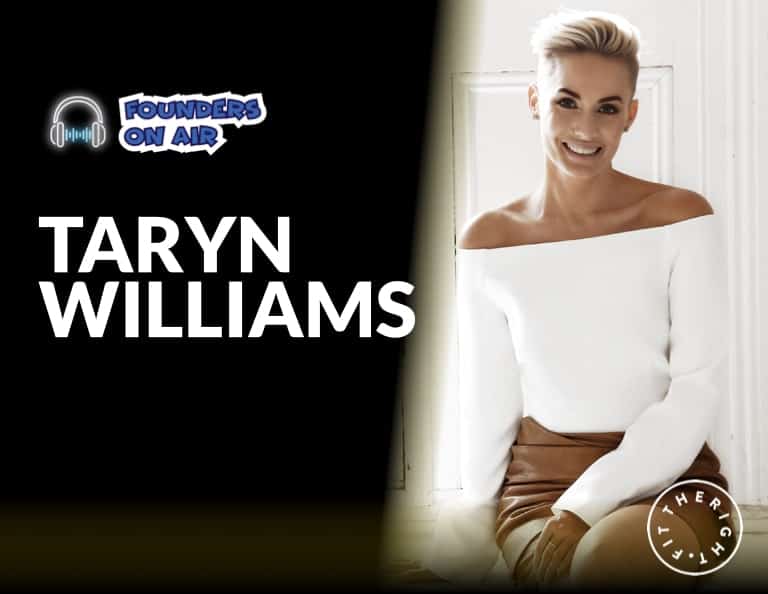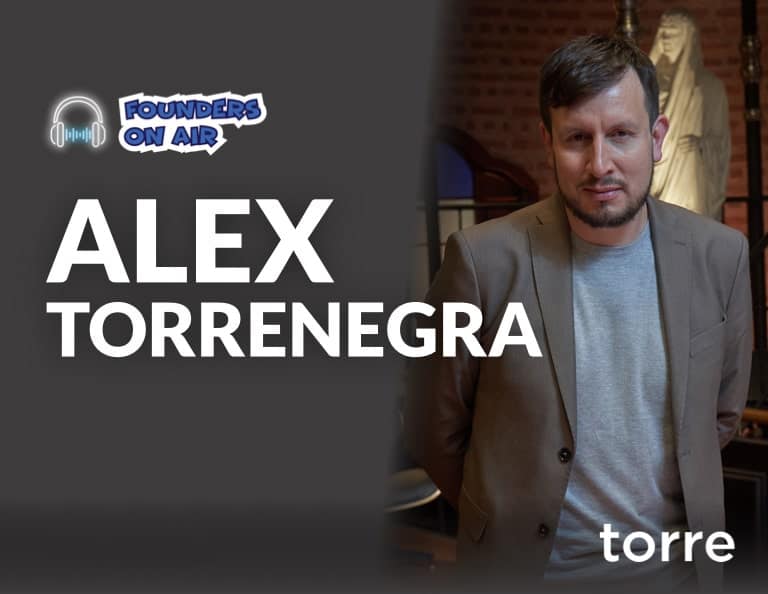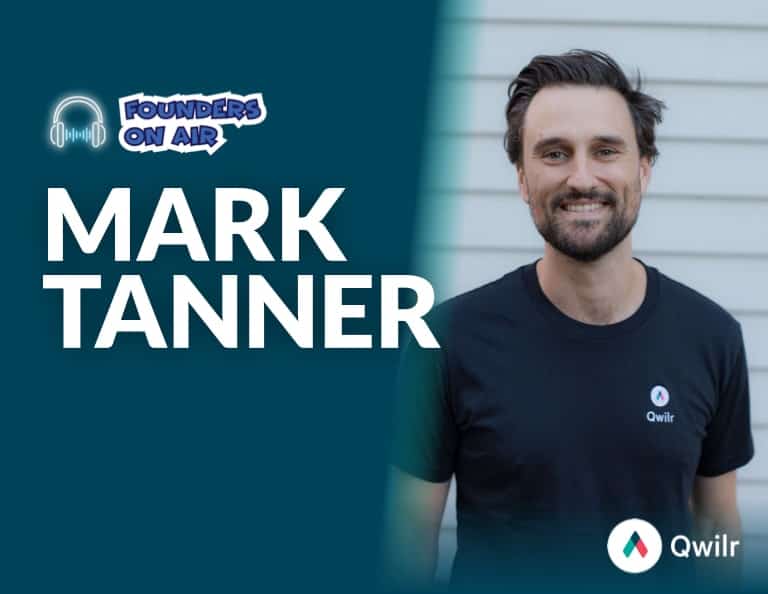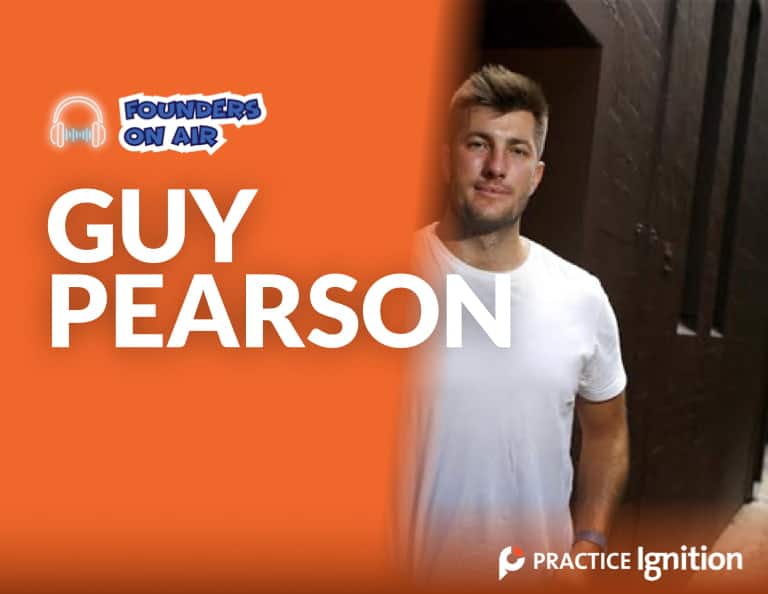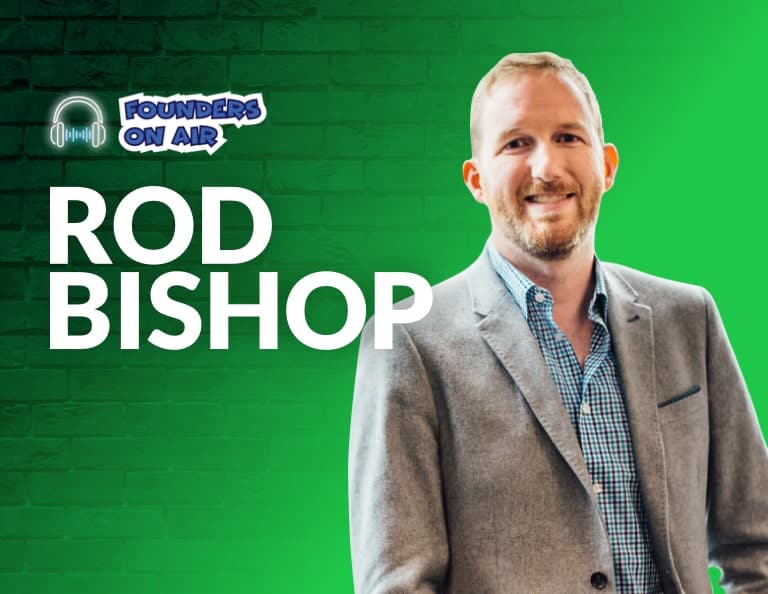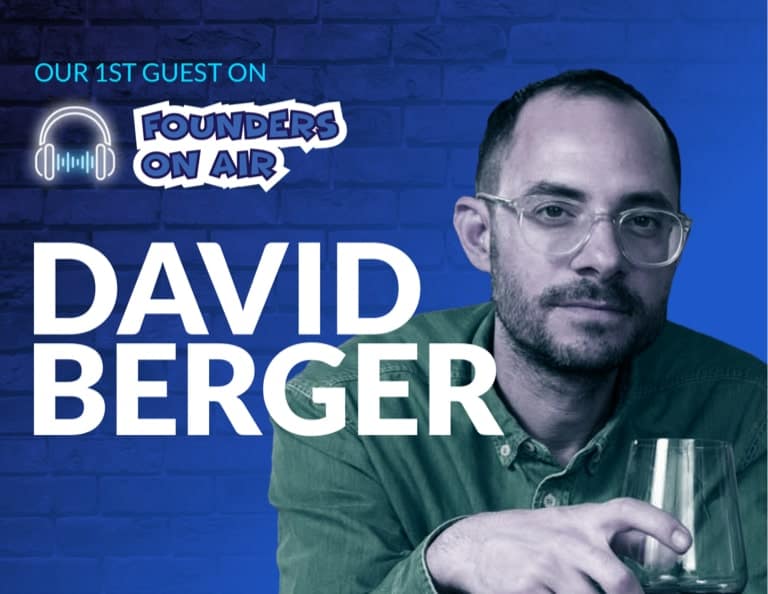© Parkhound 2020 – ABN: 96 602 017 210 – Level 3, 55 Pyrmont Bridge Rd, Pyrmont NSW 2009 – Proudly part of Spacer Marketplace
I Interviewed 23 Founders In 2020 & These Are The 23 Things I Learnt.
I Interviewed 23 Founders In 2020 & These Are The 23 Things I Learnt.
Hi. I’m Mike Rosenbaum – a Sydney-based serial entrepreneur, investor and Founder of Spacer. Spacer is Australia’s #1 Marketplace for Storage and Parking – like the Airbnb for space.
Since our launch in 2015, we’ve acquired two businesses, Parkhound and Roost, and expanded into the US. We now have over 200,000+ members and more than 50,000 locations.
What I love most about the sharing economy is that by leveraging the power of technology, we can help people access underutilised assets that sit idle all around us.
I’m also lucky enough to be part of a podcast, with my co-host ‘Founders on Air‘, Steve Orenstein founder of Zoom2U.
As I’m sure all of us experienced, last year was a year of some highs and unfortunately too many lows. One of my personal highlights, though, was getting the opportunity to interview some of my own entrepreneurial idols. Steve and I have learned a lot from these founders, including many actionable insights that we’ve implemented in our own businesses. Hopefully with some of these lessons by your side, this year will be a year of fresh starts, experimentation and success.
Top Tips For Startups
1. Lead With Your Values
Michael Fox, Founder of Fable Food Company
It should come as no surprise that starting a business requires many hours of blood, sweat and tears. As Michael shared, it is much easier to put your life into a business if it stems from something that you’re genuinely passionate about.
“I’ve been a vegetarian for coming up to 5 years, and for me, it’s a mix of ethical, environmental and health reasons. When I finished up with Shoes of Prey two and a half years ago, I took 6 months off and ended up reading about lots of different areas that intellectually interested me. One of those was the Meat Alternative space and Industrial Animal Agriculture. I got very passionate about wanting to end industrial agriculture, for all of the same reasons I wanted to be vegetarian…
I figured people love the taste and texture of meat and a lot of people understand the environmental, health and ethical issues around eating meat so they want to reduce their meat consumption. If you can deliver them the taste and texture of meat at a reasonable price and just make it from something other than animals, that’s the best way to help reduce humanity’s reliance on Industrial Animal Agriculture.”
2. Invest In Experts When You Can Afford Them
Gabby Leibovich, Founder of Catch, Scoopon, EatNow and more.
Hiring can be a struggle in the early days of a business. No one knows who you are and getting the right team can feel like a battle. Gabby explained his take on building a team and the togetherness that comes from the journey of the first years.
“Let me tell you a joke – this magician once came to my house for a birthday lunch and one of his lines was ‘Hi, I’m Luigi Zucchini and I’m the best magician in my price range.’ The kids didn’t understand the joke but the adults did. I remember our first 10 hires were just young people, most likely university dropouts – 19-year-olds that knew their area of expertise a little bit better than we did.
But, the main reason we hired them was that they were happy to accept $50 – 60k…I’m just going to fast forward 10 years and all of those 19-year-olds have stuck with us. They’re now 30-year-olds and to be honest, all of them have only worked at Catch and might not have had the technical knowledge to take us to the next level, and they knew they were ready to depart. But 10 years later, we can also suddenly afford to get experts in all areas.
The best HR person, the best customer service we can get, the best Marketing person we can get… – suddenly these are people we can afford to pay $250k. When you have 20 years of experience and you’re 40 years old you certainly have a lot more to add than a 19-year-old kid.”
3. If You’re Not Embarrassed By Your First Product Then You’ve Launched Too Late
Nicky Jackson, Founder and CEO of Rangeme.
Through her journey as an entrepreneur, Nicky learnt that you can’t always afford to be a perfectionist – especially when you’re right at the beginning of launching a business.
“At the time, the platform was very very simple. I think my husband and I put a little bit of our savings towards developing an MVP. We didn’t want to spend too much, we wanted to prove out the concept before we invested more and more money into it, so it really was a light solution. Our focus was getting it out and getting it tested and there’s a famous quote by the founder of LinkedIn which I love and which we actually had on the wall of our Sydney office for many years. It was basically “If you’re not embarrassed by your first product then you’ve launched too late,” by Reid Hoffman.
Our first product was very basic – we didn’t even have a backend to see who the users were. But we launched, we learnt, we reiterated and had we not launched when we launched we never would have got the learnings and evolved as we did.”
4. Start With Your Best Idea
Zane and Omar Sabre, Co-Founders of Maison De Sabre
Zane and Omar know firsthand that often, when you go to launch a business, you have millions of ideas that you’ll want to jump onto at once. While it can be difficult to reign it back, just focusing on getting one idea executed really well can be a great way to start.
“Initially we wanted to start off with a whole range of products; from accessories to bags to clutches to wallets to phone cases. That proved to be quite difficult when we got the first samples from overseas. Nothing was really up to scratch; nothing was how we envisioned it.
We went back to the drawing board and thought, why don’t we just start with one product and really perfect it and launch that as an entry product into the leather goods space. Our strategic approach was launching with the phone case. A phone case for us was a good move because, firstly, people have an emotional connection to their phone and a phone case will always be in their hands.
Secondly, it’s going to be the first thing you reach for in the morning when you wake up.
Thirdly, when you’re out for dinner or seeing friends you’re going to place that phone case face down and from there it’s going to start snowballing and creating word of mouth and hype. I think this was a really strategic approach for us to get into that space and really paid dividends for the brands and accelerated our growth from the get-go.”
5. Silicon Valley Is Not Worth The Move
Adam Broadway, CEO at PlatformOS
For most wide-eyed Australian entrepreneurs, one of the things on their business bucket list is moving to the heart of innovation in Silicon Valley. Adam shared that, while there are some clear pros to making the move, there are some very important things to be wary of.
“I think it’s important to come and meet people but moving permanently – no way. I don’t recommend it. Why would you come to Silicon Valley right now? Number 1 reason, your customers are here. If your customers are here then absolutely be here and get more of them and if they’re based specifically in the San Francisco bay area, Silicon Valley, then be here.
If you’re raising money it’s also a good place to be particularly for an Aussie start-up… But to move here? Based on the stats right now more people are wanting to move out then move in. Your runway if you’ve raised money, will be sucked up in no time at all.”,
6. Custom Does Not Always Equal Better
Andreas Dzumla, CEO at LongtailUX
As an ex-googler and a seasoned SEO pro, we were keen to pick Andreas brain about the most common mistakes he sees across his clients. His answer may surprise you.
“When you have a website, search is important and is a channel where your potential customers are looking for what you offer. Therefore, you really want to make sure you have a user system that actually works for Google. I’ve seen businesses that were advised on using certain CMS’ or certain systems where the pages or the content can’t be properly indexed.
The other common issue is when you go way too custom – there’s WordPress, there’s Shopify, there are all of these technologies that everyone uses – why would you custom build something if you can use something out of the box initially? Otherwise, you will have so much technical depth and for most people.. what you think your business is changes. If after 5 years, 80% of that concept is still true you’re doing really well, but very often you go in a different direction.
When you start hard coding stuff or custom developing in the beginning you can actually throw a lot of money and time away.”
7. Turning Off Notifications Is Not A Sin
Adam Stone, CEO at Speedlancer.com
It’s no secret that as a CEO or Founder you often have to wear many hats, and the sheer volume of emails coming through daily can be overwhelming, to say the least. Adam shared his unique approach to communicating with his team, which has helped him feel in control of his day again.
“I do things a little bit differently. With Slack, personally, I turn off all notifications on my phone. On my computer, I have notifications on, but I don’t always have slack actually open.
Then I have WhatsApp as an urgent triaging system, so if someone WhatsApp’s me I know I have to look at it, and of course, they can also call me. I found that this has reduced my stress a lot.
Last year I was extremely burnt out and I called one of my advisors on the brink of being totally rundown… My advisor told me to take a week off and not think about work and ideas might come. One of the ideas I had during that time was that I just needed to turn off all notifications and that if something was urgent people could WhatsApp me. That is something that has stuck, and my team has adapted to it which is great.”
8. Finding A VC Is Not As Hard As You Might Think
Benjamin Chong, Partner at Right Click Capital
Securing funding is something on every founder’s mind at some stage, but it can be intimidating and often it’s hard to know where to start. With years of investing experience under his belt, Benjamin takes us through the best ways to make those connections.
“The great thing is that VCs are not shy people, and you can look up lists of VCs. In fact, business.gov.au has a list of VCs that are taking part in the government VC program so you can certainly hit us up there. I think going to networking events is really helpful, being able to practice your pitch at various co-working spaces or start-up hubs is a great way to hone your approach and also meet with VCs. Personally, I spend time at events and pitch competitions not only in Sydney but I spend a bunch of time in Melbourne, Adelaide and Brisbane as well. I’m really happy to receive inbound deal flow which is connections from founders, whether it’s on LinkedIn or sending an email. We’re really happy to get that feedback.”
9. Know Your Weaknesses and Be Ok With Them
Tim Fung, Founder and CEO of Airtasker
It’s never easy to accept the things that you’re not good at. Tim Fung believes in leading by example and being open and forthcoming about his weaknesses to his team, so they feel comfortable to do the same.
“One of the hardest things so far has been acknowledging weaknesses. Not just on the surface level, like ‘I’m not a numbers guy’, but I mean like really acknowledging where your motivations lie and what you’ll be good at within the business.
The higher you get up within an organisation the more important it is as a leader to be able to acknowledge those weaknesses and confront them.
For me, I’ve definitely been on a journey of learning that I’m not at the benchmark in certain aspects of the business but my job as the CEO is to figure out who will be good at that and make sure they’re there and able to do the work. It’s never easy hearing what you’re not good at, especially when it’s deep in your ego or your core.”
10. Know When Is The Right Time To Leave Your Day Job
Kym Atkins and Bernadette Olivier, Co-Founders of The Volte
There often comes a time for Founders where you’re one foot in and one foot out and pulling crazy hours to try to give your side hustle room to grow. So, when exactly is the right time to make that big leap?
“We got some really valuable advice right before we jumped into this and that was to really make sure your numbers work. You can think an idea is really great but if no one is willing to pay for it, or you need 3 out of 4 Australians to be a customer for it to work, it’s probably not a good idea.
For us, we really worked out how many transactions we needed, where we should set our fees, what we needed to break even… we really let the numbers do the talking before we made the big jump.
The other thing I would definitely do is test your idea…go to a hackathon and get a beta product and see if it would work and people would actually use it. I don’t think there’s any greater proof that your idea is a good idea than if you actually get some customers.”
11. You Have To Be Able To Say No
Trystan Eeles, Co-Founder of Liftango
When a million shiny opportunities are looking your way it can be really hard to say no. But as Trystan learnt the hard way, straying away from your core business can be a costly move.
“A mistake we always make, and it’s really hard to counter, is not saying no and saying yes to too many things. There are all of these opportunities out there and there’s no shortage of ideas and opportunities that look great on paper.
Where we’ve made mistakes in the past is saying yes to things that aren’t as aligned to our project. Especially when revenue is on the table and ‘ooh it looks exciting, let’s give it a crack’ and it’s kind of aligned with your goal, but then suddenly you’re diverting your resources and diluting your core.
Sticking to your core product is crucial, we’ve learnt that lesson a little bit and we’ve since re-focused.”
12. Patience Is A Virtue
Adam McCurdie, Co-Founder of Humanatix
Good things come to those who wait and great things come to those who invest time and effort into a project without expecting anything in return.
While that might not be the story for all businesses, this is certainly how things evolved for Adam and his co-founder Josh.
“When it got to the stage where we realised we were actually onto a reasonable idea, we recognised that doing it in our spare time simply wasn’t going to cut it anymore. We made the decision that at least one of us needed to focus on this full-time to give it a chance to succeed. So, we decided that I would leave my job and give up my salary to focus full time on Humanatix and Josh would stay at his job and that would allow us to essentially share his salary to support us both.
“We did that on a handshake for 16 months until finally, we had really proven the concept on a basic MVP style product and that’s when Josh left his job to join me full-time. At that stage, we started volunteering on the project because we still hadn’t raised any money.”
“About a year later, we participated in the Google Impact challenge, looking for what Google thinks are the best ideas to create social impact using technology. We won and that resulted in a million dollars in funding from Google.org.”
13. A Warm Intro Can Be Your Best Friend
David Leslie, Investment Director at Ellerston Ventures
Getting funding in the bag is a mystery to most who haven’t done it before. David shared some of the key learnings he’s had after years in the finance and investment space, and what he looks for in someone to invest in.
“You’ve got to be able to get on with people. There has got to be a high degree of honesty and integrity. You’ve got to be able to comfortably communicate with them and you’ve got to be comfortable that they’re going to be able to take your advice and when you challenge them, they’re not going to be offended or discouraged so you can have a constructive relationship.
“In some cases, it’s great when there are two founders, in other cases, you’re looking for a strong individual founder. There’s no cookie-cutter recipe. I will say out of all the investments we’ve done they’ve usually come through some kind of a warm introduction.
“It’s important that you’re not meeting someone for the first time when they’re coming in and asking you to invest in their business. That there’s sort of a little bit of a warm introduction that helps to bridge the gap to establish some of that trust and confidence.”
14. Getting The People Part Right
Brett L’Esperance, CEO of Dauntless Air
People are one of the most important parts of any business, and the team you hire can be make or break. With his years of experience working with and investing in different businesses, Brett had plenty of wisdom around mistakes he’s seen countless founders make.
“If you can’t get the people part right, you’re probably going to have a less likely chance of succeeding. Oftentimes, unfortunately, getting the people part right means letting go of people who you initially thought were going to work out well. Oftentimes we replace or upgrade certain roles probably more slowly than we should.
“Once you make the decision to let someone go and hire a new person in that position, you almost always look back on that decision and think we probably should have done that a year ago. Problem employees are the easy ones to figure out.
“The real challenge is the people who have the right attitude and are trying very hard, but the job or the role has just grown well past them over time. You want them to succeed and you do everything you can but oftentimes it’s just most likely not going to happen. I use a term and I don’t use it lightly but if you can’t change the people, eventually you need to change the people.”
15. Focus On Woo-ing Your ‘Future Investors’
Will Davies, Co-Founder and CEO of Car Next Door
While it might be common knowledge to look after your current investors, it’s not always thought of to think of your future investors. Lucky Will has some genius tips for building those connections.
“There’s this really good eBook called ‘Pitching Hacks’ and I think it’s $10 and it’s a step by step ‘How to do your first capital raise’ including what to put in the pitch deck and how the whole process works. One of the things that it talks about to start building your network straight away.
“With Car Next Door… I wasn’t initially looking for money because I put in the first chunk myself, but I started collecting wealthy people who I knew or people who knew wealthy people and I called them my ‘Future Investors’ list. I started sending them an update about what we were doing every two months.
“By the time I went to raise capital, I had already communicated with those people four or five times and they could see the journey, see how we’d been overcoming problems and it’s much easier to get capital off people who are familiar with what you’re doing.
“I’ve kept that up, and we’re now on future investor report number 65. I quite often get told that I’m better at keeping my non-investors up to date than a lot of their companies that they’ve actually invested in.”
16. An Offshore Team Are Still Your Team
Alexis Soulopoulos, Co-Founder and CEO of Mad Paws
It’s becoming more and more common to work with a global team, across multiple continents and time zones. Managing an offshore team can be a challenge for most, but Alexis shared some nuggets of wisdom that have helped to drive Mad Paw’s company culture.
“The first thing is to treat the offshore team 100% as part of the onshore team. I think our offshore team benefited directly from a lot of early interactions from our team going there and spending a lot of face-to-face time with them –once a quarter at least our team is over there. I think it’s also important to build the culture there.
“They have the t-shirts, they have the same trophy every month and they have a lot of team activities that we do here as well. We do a lot of showing the progress of Mad Paws here in Sydney and one piece of feedback we got from our offshore team is that they would also like to see how the business is tracking.
“We now always include them… and they found it extremely motivating to understand how their work translates to the business results we’re seeing.”
17. Accelerator Programs – Worth The Hype?
Holly Cardew, Founder of Pixc
For many budding entrepreneurs, it can seem like an Accelerator program may be your only ‘in’ to a thriving network. Holly shared her experience with these programs and weighs in on whether or not you need them to succeed.
“In 2014 when I started my first accelerator program, Muru-D, accelerator programs barely existed. I was part of Muru-D’s first batch of companies and I didn’t even know what a start-up was. I had a friend who was an advisor at Muru-D and he suggested I apply and I think it just opened my eyes to what pitching is, what fundraising is and how a start-up works.
“Muru-D brought us over to San Fran and that is when I realised there was this whole other world. Then I did 500 start-ups… and everyone here expected you to have gone to Stanford or have worked at Google.
“For me, it just opened a network of people. I think accelerator programs are great for some people, but now Australia has an incredible ecosystem that people can tap into and it has become very global – you can use Twitter or LinkedIn to reach out to anyone in the world and get connections wherever you want…I think unless you really need something specific from a program the network is there, you just need to go and reach out to those people.”
18. Influencer Marketing - Yay or Nay?
Taryn Williams, Founder of The Right Fit
It’s easy to be lured into the glitzy and glamorous world of influencers, but is it really the right channel for your business? Taryn has a wealth of experience in this space and shared her tips for doing influencer marketing well.
“I think the most important thing, like any channel of marketing, is to have a plan, have a brief and have a strategy. You can’t go into these things blind.
“Firstly, get really clear about why you want to engage influencers. Influencers are an amazing, trusted voice of authority in a particular space, so if you can find someone who really resonates with your target audience, they have spent years building trust and a highly engaged audience that can be in a very particular niche.
“They’re an incredible marketing tool if done well. I think then it is about identifying who the right influencer is for your brand and working collaboratively with that person to tell a story.
“The scary thing for a marketer or business owner is influencer marketing involves letting go of some of the control. Social Media is not a place for pure advertising… it has to be informative or educational or entertaining.
You really need to be adding value for the average consumer to want to stop and engage with your brand. You need to trust this influencer knows their audience the best.”
One of the biggest problems facing Marketplaces is how to tackle both the supply and demand side. Through his years of experience with different Marketplace businesses, Alex has developed a tactic to help.
“Anyone trying to build a Marketplace today competing with an existing marketplace would have a hard time because of the network effects. The product is important, but the network is more important and getting that network becomes very expensive to do so. You have to be very imaginative to come up with ways in which your value proposition is significantly better than what the current network has to offer.
“So, a few things you have to do first; learn a lot about two-sided platform strategies – there’s a really good book called Platform Revolution. It took an academic approach and there’s a full chapter on how to get started, plus strategies for the chicken and egg dilemma. They’re not going to solve all your problems but you will have a wider toolset.
“Then get ready to fake one of the two sides – either the demand or the offer and do it systematically. While you pretend to get liquidity, you go after the side you faked, to begin with. It’s not the only way to solve the issue of the chicken and egg but it’s one of the most common ways to be able to break in.”
20. There Are No Silver Bullets
Mark Tanner, Co-Founder of Qwilr
If you’re waiting to hit that gold mine of an idea, maybe it’s time to think again. As Mark experienced, often there’s no such thing as that ground-breaking decision or channel. Sometimes great businesses are just the result of hard work, mastering the basics and continuing to learn and improve.
“Things that we were able to make work for us quite well have been, firstly, we’ve got great word of mouth because our product is very different. You’re making your documents as these web pages, and we spent a lot of time on our product and customer support and really investing in that whole experience.
“Our product is slightly viral, it’s not amazingly viral, but when people use Qwilr on the cheaper tiers the URL structure is spacer.qwilr.com for example, and that was useful for the buzz.
“We did all the standard SAS playbook stuff; some SEO, templates and some paid but there hasn’t been a silver bullet. I’m a huge fan of Ben Horowitz’s ‘The Hard Thing About Hard Things’ and there’s this great line ‘There are no silver bullets, there are just lead ones and there are lots of them.’ I think for us, you hire some marketing people, you turn on some channels, you see if it works, you test it a bit, ok that seems to go pretty well….we’re still going through that process.”
21. Closing Is A Long And Painful Process
Guy Pearson, Founder & CEO at Practice Ignition
After just closing a $26 million round of funding, Guy shared some of the key watch-outs and lessons he learnt from years of closing deals. Spoiler Alert: Always give yourself some wiggle room.
“I think it was the end of 2013. We’d had some runs but we hadn’t had an amazing amount of success and it just felt like every door we were trying to turn to was a no. Everything just seemed to be crashing down all at once, and I was with my family at my brother’s place, and I was breaking down in tears saying I don’t know how I’m going to keep this all afloat.
“To have your brother and your mother putting their hands up and saying ‘How much do you think you need?’ – they helped me keep the company alive until the next round. There have definitely been a lot of moments like that.
“Almost every round, except this last one, I’ve had to borrow money for my payroll because of due diligence or lawyers being lawyers. A word for the wise – if anyone ever says they’ve closed in 6 weeks, don’t believe that. Six months end to end is a minimum. Also, never take one year of capital, take two.
“You’ll come out the other side with a multiple x increase in value. We tend to hop skip every year. We closed the last round at less than 100% and had to dilute again. A really bad scenario to get into, so try to avoid that.”
22. When To Consider Listing on The ASX
Rod Bishop – Founder & CEO at Jayride
The ASX can seem like a foreign world for those just starting. But as Rod shared with us, listing your company on the ASX is not as scary as it’s made out to be.
“They’re very different rule books. When you consider going from private to public, the thing that will immediately catch your attention is you will need to disclose everything all the time. It doesn’t manifest as ‘Oh that is hard work’ because presumably, you’re already writing quarterly letters to shareholders. It more manifests as ‘Oh I thought this was my core IP and now I have to disclose it, I don’t know how I feel about that.”
“That’s more of a psychological hurdle than anything else, and once you get over it you realise it’s just the same stuff. You’re still focused on the numbers you think matters, you’re still talking to everyone about why you think those numbers matter, you’re just doing it in a public setting instead of a private setting.
“The rules then are slightly different – you have to pay attention to compliance and disclosure and regs, but that’s what the experts you surround yourself with are for. If you can find the right team to support you and teach you all the things you don’t know, it’s not the end of the world.”
23. Business Is Just A Succession Of Problems
David Berger, Founder of Suppertime and Jimmy Brings
And last, but certainly not least, David shared what is the crux of being a founder. There’s never a boring day when you start your own company, so embrace the challenges, the learnings and the failures.
“All I can actually say is that if you’re going to be in business it’s just a succession of hairy moments I think. There are just that many problems to be overcome and that’s actually the whole art of it, is kind of recognising that there’s just a succession of problems.
“I think when we were exiting both businesses, negotiating those deals. All of those deals were on a knife-edge, both could have fallen over at any moment, the implications of them falling over would’ve been terrible. There are just that many moments, it’s hard to even think of any in particular.”
24. BONUS: Working With A Client Is A Relationship, Not A Transaction
Manish Bhalla, Founder of FATbit.com
Manish quickly recognised one of the most common traps when starting a client-focused business – getting caught up in the excitement of acquiring clients, rather than analysing whether it’s the best fit.
“In the early days, almost all our client conversations revolved around base price negotiations. We were quite focused on generating quick value and establishing a large clientele. This meant we were often being overgenerous in serving our clients at the expense of our effort, time and money.
“Fortunately, we recognised this and moved our strategy from quantity towards quality. We invested substantial time to set up guardrails to ensure partnership with the right type of clients for our business and mitigate any undue risk before committing to a project.
“This approach became firmly ingrained in our company ethos, culture and identity. The total cost of client acquisition and retention came down, the bounce rate plummeted and we were able to acquire a blueprint for successful, long-term client relations.
“I suggest you all avoid haggling on price, winning contracts without the groundwork, and make sure to understand the current and future objectives of client businesses as a priority”.

Hopefully this article has brought you some new wisdom, or at least allowed you to reflect on how you’re running your business. Being a leader is never going to be easy but with these tips, know you have the tools to create that next big home run. For more business advice, know-how and inspiration, don’t forget to check out Founders on Air, streaming wherever you get your podcasts.
Looking for affordable storage or parking in your neighbourhood? Spacer connects you with locals in your area with space to spare, for prices 50% lower than traditional options and even more convenient.

